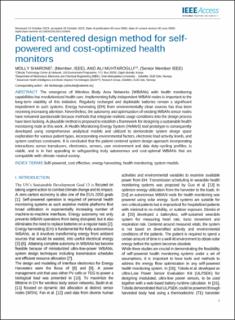| dc.description.abstract | The emergence of Wireless Body Area Networks (WBANs) with health monitoring
capabilities has revolutionized health care. Implementing fully independent WBAN nodes is important to the
long-term viability of this initiative. Regularly recharged and depletable batteries remain a significant
impediment in such systems. Energy harvesting (EH) from environmentally clean sources has thus been
receiving increasing attention. Nevertheless, the autonomy and optimization of existing WBAN sensor nodes
have remained questionable because methods that integrate realistic usage conditions into the design process
have been lacking. A plausible method is proposed to establish a framework for designing a sustainable health
monitoring node in this work. A Health Monitoring Energy System (HeMeS) tool prototype is consequently
developed using comprehensive analytical models and utilized to demonstrate system design space
exploration for various patient types, incorporating environmental factors, electronic load activity levels, and
system cost/size constraints. It is concluded that the patient-centered system design approach incorporating
interactions across transducers, electronics, sensors, user environment and data duty-cycling profiles, is
viable, and is in fact appealing in safeguarding truly autonomous and cost-optimal WBANs that are
compatible with climate-neutral society. | en_US |

